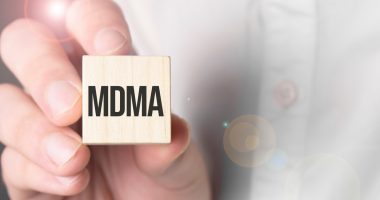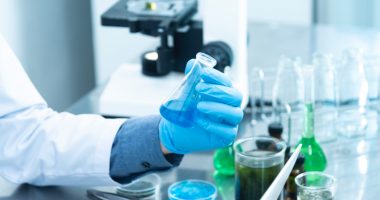Our next guest is a multi-technology biomedical company, focused on the development and commercialization of medical technologies.
Marizyme Inc. (OTCQB:MRZM) has had its sights set on development of medical technology and products, one of which is DuraGraft.
Joining The Market Herald Canada today is David Barthel, CEO and director of Marizyme who is here to do a deep dive on the company.
TMH: David, to start off, can you give us an overview of the company and its product offerings?
Barthel: Marizyme Inc, which is located in Jupiter, Florida, is in the process of commercializing a brand-new technology called DuraGraft, and the name comes from durable grafts. So we are dedicated to changing the landscape of cardiac care, and our flagship product is DuraGraft.
Now, DuraGraft is not FDA approved yet, but we’re hoping to get approval soon. However, it is available and CE approved and is available in Europe and Asia, and we have been selling it over there for several years.
So DuraGraft is a vascular graft, storage and flushing solution that has the potential to preserve and reduce oxidative damage that causes vein graft failure. So the problem in the market is that when you do a coronary artery bypass graft surgical procedure, you have to replace either a blocked artery or a blocked vein and in most cases, you have to go to (a) different part of your body.
Usually they go to what’s called the saphenous vein, which is located in the leg, and they have to remove that vein. They have to harvest the vein, which means that they have to take care of it and condition it before they place it back into the heart. So what we have is a brand-new technology called DuraGraft, which is a storage and flushing solution that prevents oxidative damage and preserves the graft during that harvesting period.
So, very important, it becomes an integral part of a successful coronary artery bypass graft surgery, CABG procedure. The interesting thing is there’s no direct competition, however they do currently use what’s called saline and blood. So there are other soaking solutions, but they don’t have the same chemical composition or mechanisms of action that really preserves what’s called the endothelial cell layer of the graft, specifically the top layer of the tissue. So we’re very excited about the technology.
It’s brand new, and there really hasn’t been a lot of technology development in cardiac care. So as I said, Marizyme is dedicated to changing the landscape of cardiac care. DuraGraft is the flagship product going out to the market.
TMH: And what about yourself and your industry experience?
Barthel: Absolutely. Besides being a high energy guy and committed to this and excited about it, I have over 25 years of medical device experience, having done a start-up back in the 2000s called Smart Pill, which was a brand-new technology, very similar to DuraGraft, and however it was in the GI space. It was an ingestible capsule that took diagnostic measurements and took that from start-up all the way through to clinical trials, FDA approval, commercialization, even securing a category one CPT code in the U.S. and then selling the company eventually to Medtronic and then staying on as an area VP for Medtronic in the GI division for about seven years.
So strong start-up experience, strong, big companies, strong medical device and healthcare experience and really understanding what it takes to get a product through those early stages of development, early stages of clinical trials, getting through the FDA and then commercialization and out to the marketplace.
TMH: Back to some of the products, David. It sounds like DuraGraft is the flagship product. Can you provide an overview of what DuraGraft offers to the industry?
Barthel: When you introduce a new technology, you’ve got to have clinical relevancy and economic relevancy and we spent a lot of time on that. So as I said, the product has very strong clinical data.
We’ve done studies internationally. We’re looking to do a clinical study in the U.S. as well. However, clinical relevancy is really the key because there’s a tremendous need with that 30% vein graft failure in the first year. It’s a significant problem.
The product is sold directly to hospitals, directly into the OR, directly to cardiac thoracic searches that just haven’t had a new tool and the nice thing about DuraGraft is that it doesn’t change the procedure, so it enters very nicely.
So if you’re going to introduce a new technology, we’re not changing the cadence if you will, of a surgeon. So this has the capability to get introduced very quickly. It has an impact immediately and has the strong potential to really prevent vein graft failure as we go out one year, two year, three years and beyond.
TMH: Going forward, what are two or three important near-term goals for DuraGraft and what sort of timeframe are we looking at as far as accomplishing them?
Barthel: The biggest thing is obviously FDA approval in the United States is No. 1 and then commercialization, getting the product out, generating the first cases and the first revenue; it’s utilization. So for us, it’s all about utilization and we’ve got a very unique commercialization plan going forward in the U.S. is that we’re really focused on hospital integrated networks and not trying to go out and hit every hospital in the country but focusing on several networks and really drive utilization there, making sure they get the right clinical support.
The other key is and I mentioned earlier, was the economic relevancy and we have the capability to save money because if you could stop and prevent vein graft failure, you don’t have to bring a patient back. They don’t have to go back for what’s called the repeat revascularization or having the procedure done again, that saves a significant cost.
So the benefit, what we offer to the marketplace is not only a unique new technology, a unique solution but as I said, clinical and economic relevancy and a real economic savings to the healthcare marketplace.
TMH: Aside from regulatory approval, what are, if any, the barriers to the widespread adoption of your product?
Barthel: In the U.S. it’s always reimbursement. It’s getting some sort of code, or in our case a DRG, we are in the process of submitting what’s called an NTAP, which is a new technology application for a new procedure. So we’re in the process, we’ve got very strong clinical data, which is critical. So that reimbursement is one of the hurdles.
The other is again, having clinical data. (A) good medical device company always conducts clinical trials and has strong data. So we’re going to continue to do that.
Then the third piece for adoption is your physician relationships, your development of your key opinion leaders, getting them on board and so that they understand the clinical benefit of the product. So we’re in the process doing those things but those are your key challenges, not only with DuraGraft but with any new technology.
TMH: And are you able to discuss the multi-year potential for growth for product uptake?
Barthel: Yes, we have a good number. We say 25 million in revenue in 2025. So 25 in ’25. So our goal financially is not only to maintain very strong margins, maintain our manufacturing sustainability but also to hit those revenue numbers.
And again, we’re a small company. We have to be lean and mean, we have to be efficient, but we also want to be able to be cost effective and drive utilization. So I kind of call our plan ECU, it, it’s effective, it’s cost savings, cost effectiveness and it’s driving utilization.
TMH: Before I let you go, is there a message you would like to leave with investors?
Barthel: You can tell how excited I am. I think this is a tremendous opportunity. I always say that we’re a rocket ship ready to take off.
We’ve got a new technology that goes into a very large market. We’ve got revenue already. We’ve demonstrated some utilization in the U.S. We hopefully have the FDA, we start to drive revenue in the US and the other part is this, we’ve got a nice pipeline.
This is a platform technology. So we’re looking at other things that DuraGraft can do and one of the large areas would be organ transplant. We have the ability to look at (that) because of our eventual storage time, which could be up to four hours, we have the ability to protect the organs during a transplant procedure.
So that really hasn’t been done before for the extended time that we could do. Now we’d have to do clinical trials to do it but that’s a very exciting capability. So from an investor standpoint, you try to hit all the check boxes that would get them excited. I think Marizyme has certainly done that.
For more information on Marizyme, check out marizyme.com.
Join the discussion: Find out what everybody’s saying about this stock on the Marizyme Bullboard and check out the rest of Stockhouse’s stock forums and message boards.
This is sponsored content issued on behalf of Marizyme Inc., please see the full disclaimer here.



